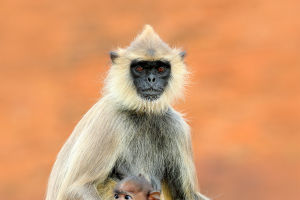It has a distinctive crown on its head that is reddish brown or sandy pink in color with black terminal spots and white subterminal spots. The head and back of the neck are light brown, and the upper back and shoulders are grey-brown.
The lower back is black with broad horizontal spots of light brown and white. This is the hoopoe.
What kind of bird is the hoopoe?
Hoopoe is a special kind of bird. Their peculiarity is first reflected in the color of their feathers.
The colors of these feathers are black, white and orange-red, so their plumage features are more pronounced.
The second feature of the hoopoe is the feathers on the top of the head, or crest feathers, these crest feathers are positioned like their hair to look unique and give a gentlemanly look.
However, the posture of these crown feathers may also change with Hoopoe's mood. When they enter a state of excitement, fear or courtship, these crown feathers re-erect.
The third characteristic of the hoopoe is that its beak is relatively slender, so some people think that the hoopoe is a subspecies of woodpecker, because in addition to the characteristics of the beak, the hoopoe also likes to build nests in some tree holes.
But in fact, hoopoe and woodpecker are two different birds, but in the process of evolution, their physical characteristics will show some similarities, also known as convergent evolution.
Its habits.
Way of activity.
Forage alone or together. It often walks slowly on the ground, foraging while walking, and when frightened, it flies up a branch or a certain distance before landing.
Food.
Hoopoe can be said to be downright carnivorous birds such as locusts, stoneflies, scarabs, worms, moths and butterfly larvae and adults, as well as other small invertebrates such as worms.
It mostly forages in forest edge grasslands or cultivated land, often sticking its long mouth into the soil for food.
Breeding method.
Breeding period April-June. During the breeding season, males often fight to protect their territory.
During the battle, the two sides approached each other. First, they face each other, their crowns high and their mouths stretched down as far as possible. They then connect, flap their wings, and continue to bump into each other on the ground until one side gives way.
Attack.
If it is attacked by an enemy, it has a unique trick to secrete a dark brown oily liquid from its tail gland, which smells extremely foul, and the attacker will flee.
Natural enemy.
There will be many natural enemies in the hoopoe's nest, such as snakes, mice, birds and so on.
The presence of these creatures can put a lot of stress on birds, and the stench can drive away predators and keep young birds safe.
How much do you know about it?


